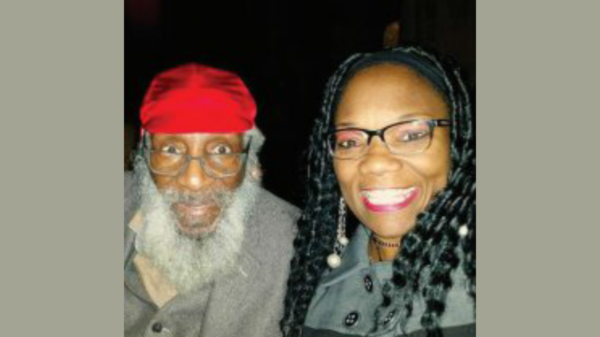By Marc Morial
“The reactionary right wing of the Supreme Court showed its true colors this week. Just as Selma’s officers didn’t arrest or charge John Lewis before administering the punishment of their billy clubs, SCOTUS denied Black voters in Alabama a seat in Congress without even hearing arguments. Such extremism is alarming, but it is also a sign that those defending the status quo are in a panic. No one would be fighting this hard to subvert democracy if they didn’t understand that the overwhelming majority of citizens want something else.” — Rev. Dr. William J. Barber II
Section 2 of the Voting Rights Act of 1965 prohibits any standard, practice or procedure that results in a “denial or abridgment of the right of any citizen of the United States to vote on account of race or color.”
An obvious – and common — violation of this law is a gerrymandered political map that splits Black communities among two or more districts so they don’t constitute a majority in any of them – a process known as “cracking” – or that crams Black voters into one district so they can’t influence the outcome in other districts – a process known as “packing.”
Alabama’s newly-drawn congressional map does both. There’s no question the map was gerrymandered to dilute Black voting power. There is no question the map violates Section 2. The United States Supreme Court decided to let Alabama use it anyway.
The Court didn’t even consider the question of whether the map is racially gerrymandered, as a lower court unanimously ruled when it ordered Alabama to redraw it. While the five-justice Supreme Court majority provided no reason for blocking the lower court’s decision, justices Samuel A. Alito Jr. and Brett M. Kavanaugh wrote separately that the lower court’s order came too close to the election and could create “chaos.”
There was no way to challenge Alabama’s racially-gerrymandered maps faster than they were challenged in this case, as legal analyst Elie Mystal pointed out. “When Kavanaugh says that the challenge is too close to the election, he means that literally any challenge to any new, racist state districting map cannot be heard until at least one election cycle has taken place under the racist maps.”
Furthermore, the plaintiffs who sued to block the map presented 11 alternative plans that comply with the law. Alabama quickly and easily could adopt any one of them without any “chaos.”
State legislatures redraw Congressional and other legislative districts every 10 years following the decennial Census so that each district has about the same population, as required by the U.S. Constitution. Since 2010, Alabama’s white population shrank from 67% to 63.1%. The Black population is now 27%. But under the gerrymandered plan, Black voters have the power to elect their preferred candidate in only one – 14% – of the state’s seven congressional districts.
As the ACLU pointed out last fall, “the maps pack Black voters into dis- tricts in ways that unfairly limit their political power in a number of districts in Jefferson County, Montgomery, Mobile, and Tuscaloosa, while cracking Black communities of interest in Huntsville and Talladega and Calhoun Counties. In majority-minority Jefferson County, where Birmingham is located, the state legislative maps also allow a collective nine districts, all majority white, to cross county lines to change the makeup of the county’s legislative delegation and dilute the power of voters of color.”
In determining whether a legislative map violates Section 2, courts have used the “Gingles test,” established by the Supreme Court’s 1986 decision in Thornburg v. Gingles:
The minority group is “sufficiently large and geographically compact to constitute a majority in a single-member district,”
The minority group is “politically cohesive,” meaning its members tend to vote similarly; and
The “majority votes sufficiently as a bloc to enable it … usually to defeat the minority’s preferred candidate.”
Regarding the first precondition, known as the “compactness” requirement, Justice Elena Kagan wrote, “Alabama’s Black population is heavily “concentrated” in the urban population centers and an area of the State known as the Black Belt .. Because Black voters in Alabama are relatively geographically compact, the plaintiffs argued that the State could have drawn a second congressional district, meeting traditional districting criteria, in which Black Alabamians would constitute a majority.”
Regarding the other preconditions, known together as the “racially polarized voting” requirement, the lower court noted that “there is no serious dispute that Black voters [in Alabama] are ‘politically cohesive,’ nor that the challenged districts’ white majority votes ‘sufficiently as a bloc to usually defeat [Black voters’] preferred candidate[s].’” Recent political campaigns in Alabama, the court said, had included “obvious and overt appeals to race.” Congressman Mo Brooks has repeatedly referred to “a war on whites,” and Senate candidate Roy Moore asserted that the Civil Rights Amendments to the Constitution “completely tried to wreck the form of government that our fore fathers intended.”
The Supreme Court did not overturn the lower court’s order that Alabama redraw its maps, but it put the order on hold and agreed to hear ar- guments in the case next fall.
In doing so, the Court declared their contempt for the constitutional and civil rights of Black Alabamians.
Marc Morial is president/CEO of the National Urban League.









